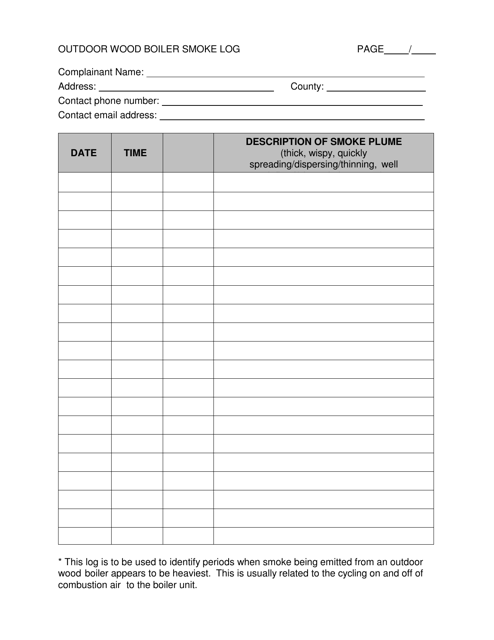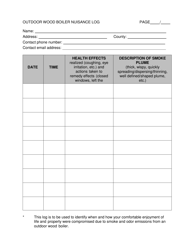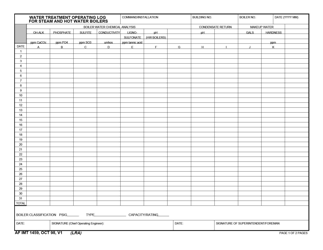Outdoor Wood Boiler Smoke Log - New York
Outdoor Wood Boiler Smoke Log is a legal document that was released by the New York State Department of Environmental Conservation - a government authority operating within New York.
FAQ
Q: What is an outdoor wood boiler?
A: An outdoor wood boiler is a heating system that uses wood as fuel to heat water or air.
Q: Why is a smoke log important?
A: A smoke log is important to track the amount of smoke emitted by the outdoor wood boiler for compliance with regulations and environmental concerns.
Q: What is the purpose of the outdoor wood boiler smoke log in New York?
A: The purpose of the outdoor wood boiler smoke log in New York is to monitor and control smoke emissions from outdoor wood boilers to ensure compliance with state regulations.
Q: What information is typically included in a smoke log?
A: A smoke log typically includes details like date, time, wood type, visible smoke observations, and other relevant information.
Q: Who is responsible for maintaining the smoke log?
A: The owner/operator of the outdoor wood boiler is responsible for maintaining the smoke log.
Q: What should be done if excessive smoke is observed?
A: If excessive smoke is observed, adjustments should be made to improve combustion efficiency and reduce smoke emissions. Necessary maintenance or repairs may also be required.
Q: Can outdoor wood boilers emit harmful pollutants?
A: Yes, outdoor wood boilers can emit harmful air pollutants if not properly operated and maintained.
Q: What regulations apply to outdoor wood boilers in New York?
A: In New York, outdoor wood boilers must meet certain emission standards and operation requirements as regulated by the Department of Environmental Conservation (DEC).
Q: Are there any financial incentives to upgrade or replace outdoor wood boilers in New York?
A: Yes, there are financial incentives and programs available in New York to encourage the upgrade or replacement of old outdoor wood boilers with cleaner and more efficient alternatives.
Form Details:
- The latest edition currently provided by the New York State Department of Environmental Conservation;
- Ready to use and print;
- Easy to customize;
- Compatible with most PDF-viewing applications;
- Fill out the form in our online filing application.
Download a printable version of the form by clicking the link below or browse more documents and templates provided by the New York State Department of Environmental Conservation.




